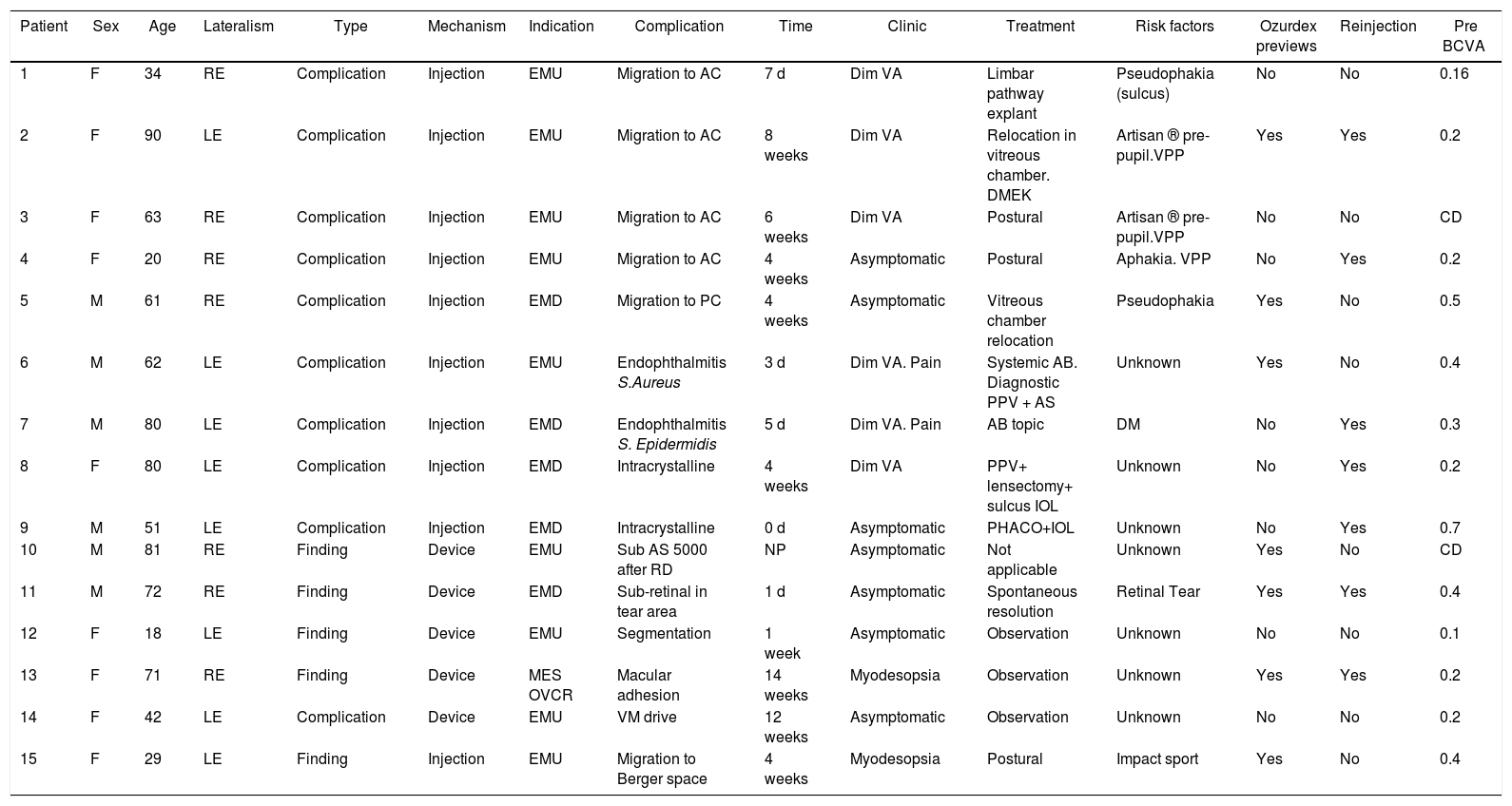Intravitreal dexamethasone implant (IID) is an effective and safe treatment for macular edema as described in the literature. Ocular hypertension and cataracts are the most frequent complications. The indications of IID in the last few years have led to the retrospective reporting of rare complications, with potential visual impact related to the injection procedure.
MethodsA case series is presented of fifteen patients treated with IID for macular edema who developed non-pharmacological complications related to the injection procedure or the implant itself, including, among others anterior chamber migration, intracrystalline injection, endophthalmitis, or segmentation. Differentiation was made between true complications and those that did not lead to any ocular damage. Epidemiological and baseline data were collected along with the treatment and outcome in each case. An analysis was made of multimodal imaging available.
ResultsThe incidence of complications was 0.65% in this series Anterior chamber migration was the most frequent complication (n=4), followed by intracrystalline injection, and endophthalmitis (n=2). The times between the injection and complications were variable. Visual impairment was the most common symptom (n=6). However, despite the complications found, IID was an effective treatment in most of the reported cases.
ConclusionsClinicians should be aware of these rare non-pharmacological complications so that they may be prevented and detected early, avoiding irreversible ocular damage.
El implante intravítreo de dexametasona (IID) es de gran utilidad en el manejo del edema macular (EM). La eficacia y seguridad del fármaco han sido ampliamente demostradas, siendo la hipertensión ocular y el desarrollo de catarata las complicaciones más frecuentes. El uso del IID en los últimos años ha permitido describir retrospectivamente algunas de las complicaciones raras, pero potencialmente graves que pueden sobrevenir tras su inyección.
MétodosPresentamos un estudio retrospectivo que describe estas complicaciones en una serie de 15 ojos, bien asociadas a la inyección o al propio dispositivo: migración a cámara anterior, inyección intracristaliniana, endoftalmitis o segmentación entre otros. También se distinguió entre complicaciones propiamente dichas y las que no conllevaron daño ocular. Se recopilaron los datos epidemiológicos y basales, el manejo terapéutico y la evolución. Según disponibilidad, los casos fueron descritos mediante imagen multimodal.
ResultadosLa incidencia de estas complicaciones fue del 0,65%. La migración del implante fue la complicación más frecuente (n=4): un ojo afáquico, uno con lente de fijación iridiana y 2 seudofáquicos. La inyección intracristaliniana y la endoftalmitis (n=2) fueron las siguientes en frecuencia. El periodo de aparición de las complicaciones fue variable. La forma de presentación clínica más frecuente fue la disminución de la agudeza visual (n=6). El tratamiento con IDD fue eficaz en la mayoría de los casos a pesar de las complicaciones.
ConclusionesEs importante conocer estas complicaciones no farmacológicas e identificar los factores de riesgo que pueden limitar el potencial daño ocular derivado.










